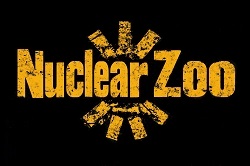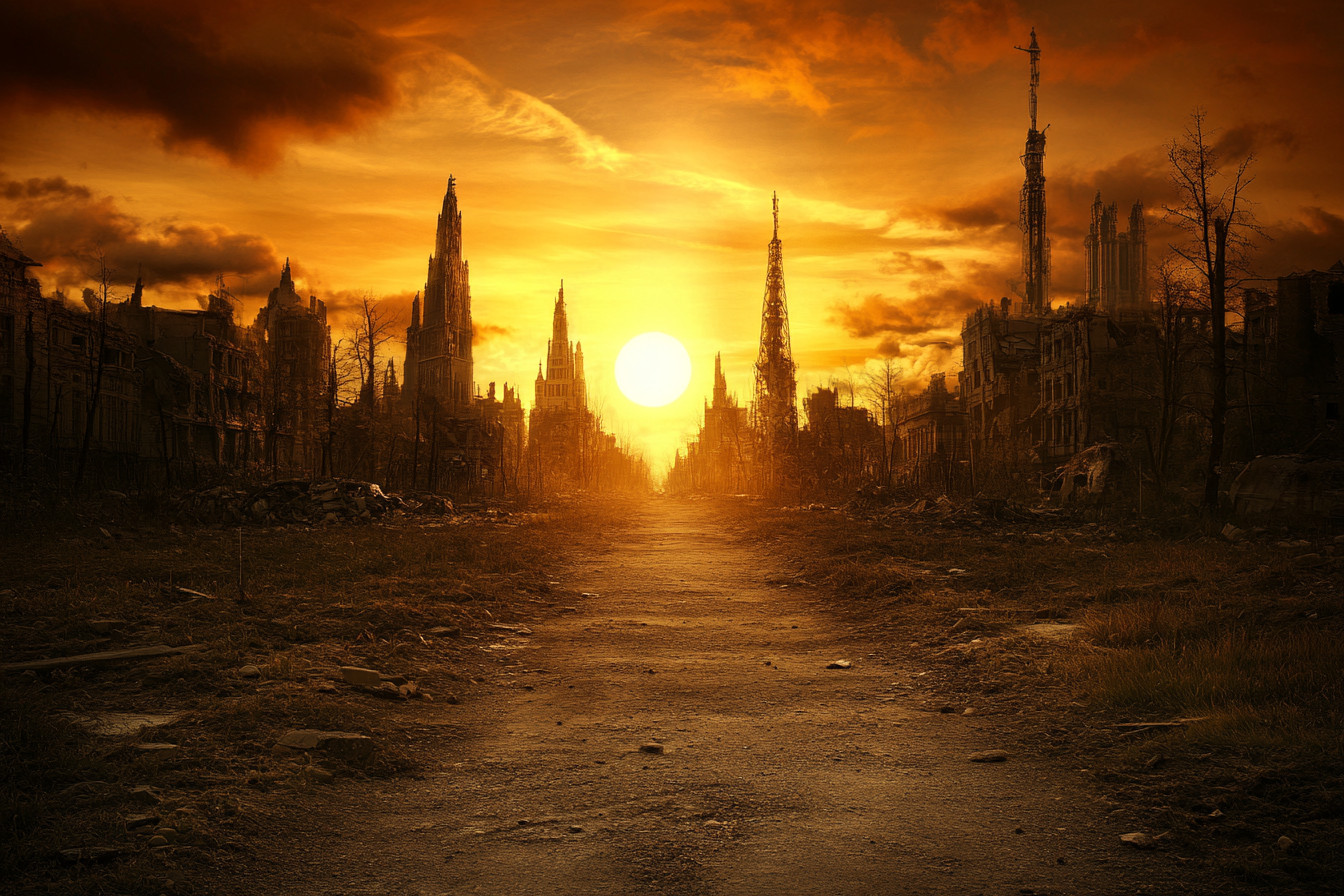I’ve always had a weakness for a certain breed of science fiction film—the kind whose screenplays seem to have bypassed any form of quality control. These movies make me question the directors’ judgment, the actors’ career choices, and, in moments of brutal self-awareness, my own life decisions. They exist in this weird space between laughably terrible and genuinely unwatchable.
When you’re watching one, you can’t help but notice how a major plot point collapses if you apply even an ounce of logic. Yet somehow, this spectacular badness becomes the secret ingredient that makes these cult films oddly enjoyable. Last weekend, I found myself explaining to my friend Sarah why some people (myself included) love the “so bad it’s good” phenomenon.
There’s something oddly charming about a film that tries its hardest, only to fail in spectacular fashion. When I’m with my movie club friends, we share this twisted sense of community as we laugh at a film’s sheer incompetence. But I disagree with the idea that movies like “The Last Dragon” have underground cult status simply because they fail so spectacularly.
“The Last Dragon” is what it is: a bizarre, slightly unhinged relic from the 1980s that I watched three times in college. I consider my standards higher than most, and yours should be too. Now, buckle up as I take you through five science fiction films that almost achieve the “so bad they’re good” status but ultimately fall short of becoming campy classics.
These movies require the kind of enjoyment that only comes after a few drinks—if you’re lucky enough to have a bartender nearby—or that you might endure after losing a bet to a friend.
The Glorious Messes – Five Sci-Fi Films That Test Your Patience
1. Battlefield Earth (2000): An Alien Makeover for John Travolta
If any film perfectly captures the phrase “swing and a miss,” it’s “Battlefield Earth.” On paper, the premise sounds like solid sci-fi material—humans fighting to overthrow alien conquerors who’ve taken over Earth.
But watching this movie is like seeing that premise get dragged through every possible filmmaking mistake. John Travolta plays an alien named Terl, who looks like a Klingon having a catastrophic hair day. The dialogue sounds like someone tried to write Shakespeare after suffering a concussion.
And the camera work? The infamous Dutch tilt appears so often that I got a neck cramp just watching it. The camera tilts so frequently, I wondered if the crew had forgotten how to use a level.
I still remember going to a midnight showing back in 2001. The theater was half-empty, just me and a handful of other people who clearly had nothing better to do that night. We weren’t there to enjoy the film—we knew from the opening scene that we were in for something resembling dental work without anesthesia.
We laughed throughout the movie, but not the affectionate laughter you might give a charming B-movie. We cringed as Travolta’s character delivered lines that would make a third-grader presenting a book report seem like Laurence Olivier. My friend Tom actually walked out after an hour, but I stuck it out for the full punishment.
2. The Happening (2008): Nature Gets in Your Face and Whispers
M. Night Shyamalan has had his ups and downs, but “The Happening” stands out as particularly baffling.
It feels like Shyamalan woke up one morning, thought “What if trees… could kill?” and then forgot to include an actual plot. In this film, nature takes revenge on humanity—not with hurricanes or wildfires, but with some kind of plant toxin that makes people kill themselves.
Mark Wahlberg actually says, with a straight face: “Can you believe it? We are in a crisis, and we are running from the wind!” That’s the kind of line reading that would make any audience howl with laughter. I saw this in theaters with my sister Jenny, and we still quote that line to each other whenever there’s a slight breeze.
But while “The Happening” certainly made us laugh, it wasn’t consistently funny. It’s more like a slow, painful crawl to the end credits. Think of it as Hitchcock’s “The Birds,” but made by someone terrified of houseplants.
3. Plan 9 from Outer Space (1957): The Original Beautiful Disaster
“Plan 9 from Outer Space” has earned its reputation as a terrible movie. It was definitely the career highlight (or lowlight) for Ed Wood, who directed it with all the skill of a sleepy toddler and the budget of a lemonade stand.
The plot—pulp science fiction at its most basic—involves aliens bringing the dead back to life. Why? They want to stop humans from creating a doomsday weapon.
Their brilliant plan is to first try talking to us, and when that fails, to reanimate corpses to get our attention. I mean, honestly, if you were an alien, would you want to just talk to humans? Five years ago, I watched a midnight screening at this run-down retro theater in my hometown.
The audience was packed with fans dressed as zombies or aliens, shouting “yes!” whenever something particularly absurd happened on screen. We all recognized we were watching something spectacularly bad, fumbling through every aspect of filmmaking. The weirdest part is trying to imagine Ed Wood believing he was creating something meaningful.
The production history reads like a comedy of errors—Wood cobbled together funding from a Baptist church, cast his chiropractor as an alien leader, and used paper plates as flying saucers. I’ve made home movies with my nephew that had more convincing special effects.
4.
Jupiter Ascending (2015): Celestial Royalty and Cosmic Roller Skating
When you combine Mila Kunis, Channing Tatum, and the concept of roller skating in space, you get “Jupiter Ascending”—a fever dream of glitter and ambition that makes “Twilight” look like “Citizen Kane.”
Kunis plays a toilet cleaner who discovers she’s actually space royalty (because sure, why not?), while Tatum portrays a genetically engineered super soldier who zooms around on what are essentially cosmic rollerblades. I went to see this on opening weekend, and the theater was packed. The confusion in the room was palpable.
I’ll never forget watching Tatum, on his space skates, whizzing around a CGI Chicago while trying to explain the convoluted plot to Kunis. The dialogue was so awkward it could’ve sunk the Titanic. My friend Carlos fell asleep halfway through, and when he woke up, he asked if we’d switched movies.
I couldn’t blame him—the plot jumps around more than Tatum on his fancy space boots. It’s the kind of film where you need a flowchart just to keep track of who’s related to whom in the space dynasty.
5.
Zardoz (1974): Sean Connery in a Red Diaper: Enough Said
Most films let you escape reality; “Zardoz” makes you question your sanity. This bizarre slice of 1970s sci-fi features Connery in what looks like a red diaper, a giant floating stone head that vomits guns, and a plot that feels like it was written during an LSD trip. Set in a post-apocalyptic future where society is divided between immortal “Eternals” and savage “Brutals” (with Connery playing one called Zed), the film attempts to tackle heavy themes like civilization and mortality but ends up tripping over its own philosophizing.
I watched this at a sci-fi convention with my college roommate Rick. Every time the stone head boomed, “The gun is good! The penis is evil!” someone nearby nearly choked on their popcorn.
The problem with “Zardoz” is its identity crisis—is it trying to be profound, or is it just weird for weirdness’ sake? Watching Connery trudge through scenes looking as confused as the audience just makes for an uncomfortable experience. It feels like a movie made by a freshman philosophy major after their first encounter with Nietzsche.
Why “So Bad It’s Good” Isn’t Always Enough
To some viewers, these unintentional comedies have a strange appeal. They attract us with the notion that they somehow became entertainment despite all odds and for all the wrong reasons. Beloved bad movies have inspired books, documentaries, and cult followings—think “The Room,” “Troll 2,” or “Showgirls.” Yet not all terrible films achieve this status.
What works in one case might fail in another, even within the realm of “so bad it’s good.”
On a deeper level, I think enjoying bad movies comes from something beyond simple entertainment. There’s an odd satisfaction in watching something fail so completely. When I had a terrible job at that insurance company years ago, watching these films provided perspective—at least I wasn’t responsible for “Battlefield Earth.”
When you predict the chaos and then watch it unfold, it can actually make your own day seem better by comparison.
It reminds you that things could always be worse—you could be involved in that cinematic disaster. Some coffee shop critics might argue that people like me simply enjoy watching others fail. But that’s not it at all.
What I love is the unintentional comedy, the moments of such profound misjudgment that you can’t help but laugh. As much as I appreciate bad movies, I do have limits. There’s a clear difference between a film that’s bad in a fun, campy way and one that’s just plain unbearable.
A truly good “bad” movie walks the line between earnestness and absurdity, but the films I’ve listed here? They stumble across that line face-first into cringe territory. The laughter they provoke isn’t joyful but uncomfortable, and no amount of shared experience can make their storytelling, direction, or performances “good” in any conventional sense.
Take “Battlefield Earth,” for example. It has all the ingredients for a guilty pleasure—ridiculous performances, ludicrous plot twists, and unforgettable (for all the wrong reasons) special effects. But after a while, it becomes excruciating.
John Travolta’s speeches about Psychlo superiority might give you a laugh or two, but thirty minutes later, you’re checking your watch and wondering why you didn’t just rewatch “Alien” instead. Similarly, the Wachowskis tried to create an epic space opera with “Jupiter Ascending” but ended up with a confusing mess that’s more style than substance. It’s not even fun to mock because it takes itself so seriously while making so little sense.
Then there’s “Plan 9 from Outer Space,” arguably the grandfather of all “so bad it’s good” movies. For reasons I can’t fully explain, it’s achieved legendary status among cult films. Ed Wood wasn’t in on the joke—he genuinely thought he was making something groundbreaking, and that misguided passion seeps through every scene.
Even with its cult status, I can’t pretend it’s anything more than an exercise in patience. If you make it through the entire film, you deserve some kind of award. It’s “classic” in the same way people cherish their grandmother’s hideous holiday sweater—because of the unique place it holds in cultural memory, not because of any actual quality.
Watching these films feels like sitting through an awkward family reunion—you laugh to keep from crying, and you stay because you’re already committed. Some viewers find beauty in these disasters. I see wasted potential.
Science fiction, when done well, explores humanity’s imagination and deepest questions. When done poorly, it makes us afraid of houseplants. That’s why, while I respect anyone who finds joy in these misfires, I’ll be over here rewatching “Blade Runner” and “2001: A Space Odyssey” for the hundredth time.
These movies do occupy their own space in the sci-fi landscape. They remind us that for every masterpiece, there’s a bizarre oddity gathering dust in the bargain bin. They show us what happens when filmmakers take big risks—sometimes spectacularly failing in service of their unique vision.
“Zardoz” might not make my top 100 films, but I can’t deny that Sean Connery in that outfit took extraordinary courage. Long live the flames of “bad” cinema in the mythology of sci-fi. If you decide to watch one of these magnificent disasters, I recommend following my time-tested ritual: gather some friends who share your appreciation for the absurd, prepare some snacks, and perhaps pour something stronger than soda.
You’ll need all the help you can get.






